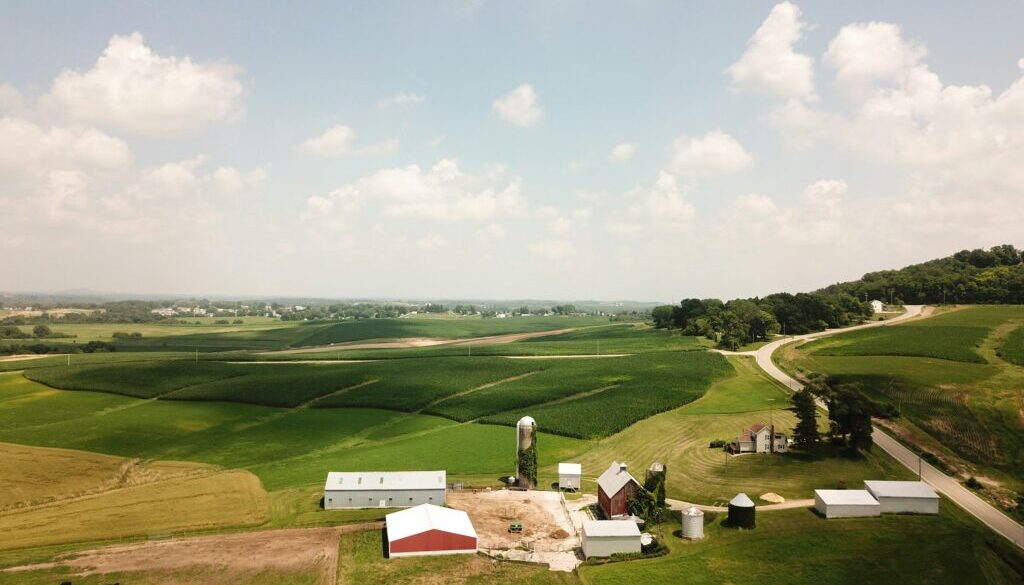Court dismisses lawsuit alleging EPA failed to protect farmers from PFAS in fertilizer
Listen to the audio version of this article (generated by AI).
A federal district court this week dismissed a lawsuit alleging the US Environmental Protection Agency (EPA) failed to prevent the contamination of farmland across the country with toxic PFAS in sewage sludge used as fertilizer.
The US District Court for the District of Columbia on Monday dismissed the lawsuit on the grounds that the court does not have jurisdiction to make a ruling in the case, wrote Judge Dabney Friedrich in her opinion.
The lawsuit was filed last year by the group Public Employees for Environmental Responsibility (PEER) on behalf of Texas farmers and ranchers who alleged their farms were “poisoned” by PFAS-tainted fertilizer from a neighbor’s property, as well as Johnson County, Texas, the Potomac Riverkeeper Network and the Maine Organic Farmers and Gardeners Association.
About 60% of sewage sludge produced each year by US wastewater treatment plants is spread on farm fields, according to the EPA, with the rest either sent to landfills or incinerated. While it is treated to remove pathogens, there are no national requirements to test sewage sludge for PFAS and almost 70 million acres of US farmland could be contaminated with the “forever chemicals.” The ruling means that farms and farmers across the country will remain vulnerable to PFAS in sewage sludge without help from federal regulators.
PFAS, short for per- and polyfluoroalkyl substances, are highly persistent in the environment and in the bodies of humans and animals, and are linked to a variety of health harms including some cancers.
While an EPA provision for the review of sewage sludge (also called “biosolids”) requires the agency to review sewage sludge regulations at least every two years “for the purpose of identifying additional toxic pollutants and promulgating regulations for such pollutants,” Judge Friedrich states in her opinion that the two-year deadline applies only to the review itself, not to identifying or regulating additional pollutants.
“We disagree,” Laura Dumais, staff counsel at PEER, said. “We think a timeline should be inferred from the statute. It’s just really heartbreaking for the ranching families that are plaintiffs in this case and for farmers all across the country whose land has been contaminated from PFAS in sewage sludge.”
PEER is weighing whether to file an appeal, ask the judge to reconsider the ruling, or petition the EPA for a rulemaking, after which PEER could sue the agency if it denies or ignores the petition – a process that would take years, Dumais said.
“What [Judge Friedrich] did not mention in her opinion was that in all of this time EPA has never, not once, identified or regulated a single new threat in sewage sludge,” she added.
The EPA has published nine such biennial biosolids reviews since 2005 and has found over 700 chemicals in sewage sludge. The agency has not regulated any of these aside from nine heavy metals, including arsenic, lead and mercury, which were named in the agency’s 1993 rules for land application of sewage sludge.
“The presence of a pollutant in sewage sludge alone does not necessarily mean that there is risk to human health or the environment from its use or disposal,” the EPA says on its website.
When asked how it will address ongoing concerns about PFAS in sewage sludge, an EPA spokesperson said that the agency is reviewing the decision.
Larry Woolley, commissioner of a precinct in Johnson County, Texas, said the court’s decision was “quite disturbing.”
“For the judge to dismiss it seems totally irresponsible,” Woolley said. “I can’t seem to understand why the [EPA] is not more interested in taking a proactive stance on this. We’ve made it very clear, as have other states, that this is a huge concern.”
Johnson County gained national attention in 2024 when two farm families sued the biosolids company Synagro after their health declined and their pets and livestock were sickened, allegedly due to PFAS contamination from sewage sludge the company marketed as a fertilizer and soil conditioner.
Soon after, PEER filed the lawsuit against the EPA on behalf of the families and others.
Ten states have issued guidance for at least one PFAS chemical in sewage sludge, according to an April 2025 report by the Environmental Council of the States.
In January, the EPA published a draft risk assessment for two PFAS chemicals in sewage sludge, perfluorooctanoic acid (PFOA) and perfluorooctane sulfonic acid (PFOS), concluding that land-applied biosolids containing only 1 part per billion of either chemical “exceed the agency’s acceptable human health risk thresholds for some pasture farm, food crop farm, and reclamation scenarios.” However, PFOS and PFOA are just two of thousands of PFAS chemicals.
“EPA should regulate threats in sewage sludge,” Tony Coleman, a Texas plaintiff in the litigation who has lost 64 cows to PFAS from contaminated fertilizer that seeped onto his property, said in a statement. “It doesn’t make any sense that EPA knows about the harm we and others have suffered and can put off doing anything about it indefinitely.”



